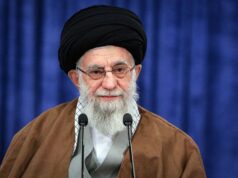“…though liberals do a great deal of talking about hearing other points of view, it sometimes shocks them to learn that there are other points of view.” – William F. Buckley, 1956
The bizarre, almost cult-like, antipathy towards President George W. Bush and conservative ideas has recently brought the Left success. The Left seized control of Congress in 2006 and now the presidency. After losing key elections in 2000 and 2004, the Left’s leaders could have easily retreated. Instead, they agitated their campus contacts to keep pushing their ideology and to document the purported failures and missteps of conservatives.
The “Macaca” Moment
One such misstep in 2006 occurred when Senator George Allen (R-VA) lost his Senate seat. His loss is attributed, at least in part, to calling a pesky Leftist activist—20 year-old University of Virginia student S.R. Sidarth—”macaca.” For the majority of Americans who did not know the meaning of this term, the mainstream media made haste to explain that it was a pejorative for a native of the Belgian Congo in Africa.
Despite Allen’s well-established record of working with all Virginians, the Left successfully distorted his record because of this one, isolated comment. Underreported was the fact that Sidarth had been trailing the senator and taping his every pronouncement, finally prompting Allen to snap at him.
In retrospect, Allen’s loss had a significant impact on the 2008 election season. It was Sidarth’s aggressive style of activism that helped achieve this victory for the Left.
Campus Agitation by the Left
The Left’s attacks on President Bush and conservative leaders are only the most obvious examples of Leftist agitation. Indeed, such agitation can also be observed against conservative students and activities on college campuses.
In autumn 2007, the Young America’s Foundation club at The George Washington University made preparations to host David Horowitz, a conservative activist (and JPC fellow), for a lecture about radical Islam. To stop the event from occurring, campus Leftists distributed a flyer that read, “Hate Muslims? So Do We!!” and attributed it to the conservatives working to host the event. The agitators stated at the bottom of the flyer that it was posted by “Students for Conservativo-Fascism Awareness.”
In a knee-jerk reaction, most of GWU’s administration attempted to blame the Young America’s Foundation club for distributing the flyer. Yet, if they examined it more closely, they would have discovered that it was actually an attack on conservative students, not Muslims. Administrators were quick to make calls for those responsible to be punished, and one student government leader suggested that those responsible be expelled.
Eventually, the Leftist students responsible for the flyers admitted to posting them. Their only defense was that they believed Horowitz didn’t have the right to speak on campus. Yet, once it was revealed who posted the flyers, the demands for punishment on campus evaporated.
In the end, the campus Leftists were only given a slap on the wrist of a single $25 fine. To put this in perspective, a parking violation at GWU is $45.
The GWU incident is only one example of how campus administrators can blindly defend Leftist ideas and activists. This has only emboldened other agitators.
In recent years, for example, pundit Ann Coulter, and Bill Kristol of Fox News and the Weekly Standard, along with other speakers, were assaulted on campus by Leftists throwing food. Conservatives at the University of Redlands received death threats when they invited New York Times best-selling author and radio show host Tammy Bruce to their campus.
While these incidents are disturbing, the double standard is even more so. If conservative students attacked a liberal speaker or student, the punishments would almost certainly have been more severe. If conservative students were the perpetrators, they may well have been forced to attend free speech sensitivity training, at the very least. They might have even been suspended or expelled. However, because the agitators were Leftists, the university took no formal action.
The Liberal Campus
The problem stems from broader problems in our institutions of higher learning. They are breeding grounds for radical faculty members and administrators to encourage and train Leftist students to effectively promote their agendas.
For example, over a six-year period, Boise State University spent more than $300,000 on liberal speakers including Al Gore, Danny Glover, Angela Davis, and Ralph Nader. Nothing was spent on conservatives. Atlanta’s Emory University scheduled 35 liberal speakers but only five conservatives. The conservatives who were invited to speak were hosted through Young America’s Foundation and the conservative students on campus. If we relied on the schools alone, the imbalance would grow.
This environment has yielded a homogenously liberal campus environment, as seen in recent surveys and polls:
-
A 2008 Gallup poll found that 41 percent of Americans age 18 to 29 chose Bill Clinton or John F. Kennedy as the former president they would most like to bring back as the next president. Only 8 percent chose Ronald Reagan.
-
A 2008 Harvard University study reported that 51 percent of college students consider themselves “liberal” or “leaning liberal”—an increase of 7 percent from four years ago.
-
A 2005 Washington Post story reported, “By their own description, 72 percent of those teaching at American universities and colleges are liberal and 15 percent are conservative.”
Reagan Activism
Despite this incredible and long-standing disparity, the Left is traditionally more aggressive on campus. Rarely do conservatives attend liberal programs and disrespectfully interrupt or brazenly challenge speakers in the manner commonly seen on the Left. Conservatives are not particularly prone to participate in demonstrations or boldly confront those with whom they disagree.
Yet, conservative activists on campus can be quite effective. When conservative youth receive the proper encouragement and training, a dramatic impact can be made on even the most liberal college campus. To this end, Young America’s Foundation has encouraged robust yet respectful activism from its very inception in 1969. YAF’s successful activism model is a model inspired by one of America’s greatest presidents: Ronald Reagan.
This model of campus activism encourages campus conservatives to use Ronald Reagan’s techniques and strategies on the world stage as a means to effectively influence change on their college campus.
Reagan’s predecessors attempted to appease the Soviets with the policies of détente or convergence. Their hope was to avoid confrontations, to “live and let live” despite the fact that it was the communists’ goal to defeat and subjugate the free world. The Truman, Eisenhower, Kennedy, Johnson, Nixon, Ford, and Carter eras consistently gave ground to communism. Ronald Reagan, however, successfully reversed this trend, in part because of his confrontational style—denouncing the Soviet Union as an “Evil Empire” and calling for Gorbachev to tear down the Berlin Wall. This approach unquestionably contributed to the collapse of communism.
Young America’s Foundation trains its students to be aggressive when promoting conservative ideas. Being aggressive does not mean that conservatives should scream obnoxious slogans, however. To be sure, Ronald Reagan didn’t attack every Leftist program. Rather, he attacked obvious weaknesses and recognized the Berlin Wall as the Soviet’s “Achilles heel.” He raised the question: If the Soviet system was so effective, why did they build a wall to keep people from escaping to the West?
Accordingly, the Reagan model encourages students to look at the campus Left’s biggest flaws and exploit them. For instance, on the anniversary of the September 11, 2001 attacks, we encourage students to participate in the 9/11: Never Forget project whereby they create an American flag memorial featuring more than 3,000 American flags to represent each person murdered by radical Islamists. This program, first launched in 2003, reached more than 180 campuses this year. It is very effective in combating campus Leftists who seek to apologize for radical Islam, or to blame U.S. policy for the September 11, 2001 attacks, as they often do.
Providing Fresh Voices
Another effective tactic has been to work with conservative students to host prominent conservative leaders on their campus. Young America’s Foundation routinely works with young people to host leaders such as former United States Attorney General John Ashcroft, famed journalist John Stossel, popular radio talk show host (and JPC distinguished fellow) Michael Medved, and many others.
Given the dearth of conservative professors, campus lectures are critical to encourage debate and discussion of new ideas. Young America’s Foundation’s nationally-known speakers provide hundreds if not thousands of students a chance to hear conservative ideas directly from the mouths of conservatives, and not through the filter of a liberal professor or the mainstream media, which all too often demonize conservative thought.
The influence of these lectures should not be underestimated. When undecided or moderate students see a large turnout for a conservative speaker, they may reconsider their own worldviews. They might even think twice before blindly accepting what a Leftist professor teaches.
As the late William F. Buckley wrote: On the matter of your lecture series, these are experiences of infinite importance. As recently as last night, a 42-year-old affluent, influential conservative told an audience of 400 people that his orientation came from hearing such a talk (yes, by me) at Cornell when he was a sophomore.
It should also be noted that bringing nationally-known conservatives to campus buoys the spirits of students under constant fire from the Left. When young conservatives see a strong advocate effectively defending their ideas in front of a large crowd, it encourages them to organize more activities.
Challenge & Opportunity
Life as a campus conservative can be difficult. Conservative groups nationwide must continue to work to ensure our young people have the tools, resources, and strategies they need to effectively change the climate on campus.
Helping students in this way makes a lasting impact. After all, conservative ideas can only be heard if conservative students are empowered to take action.
Patrick Coyle is vice president of Young America’s Foundation.





